اشتراک در:
نظرات پیام (Atom)
skip to main |
skip to sidebar


همچنان به شيوه سالهای گذشته راهمان ادامه خواهيم داد: ـ آگاه نمودن خلق ازمواضع ضد خلق! ـ ايجاد فضای دوستانه بين ديدگاههای مختلف در درون جبهه خلق ـ بدون هيچگونه گذشت و چشم پوشی درافشای مواضع گذشته و حال ضد خلق! ـ تسليم شانتاژ، تهديد ، توهين و ناسزا و۰۰۰ نخواهيم شد که اين شيوه"شاهان منحوس" و"شيخان ملعون" است.
RADAN

بايگانی وبلاگ
-
◄
2019
(3566)
-
◄
سپتامبر
(464)
- ◄ سپتامبر 30 (19)
- ◄ سپتامبر 29 (12)
- ◄ سپتامبر 28 (20)
- ◄ سپتامبر 27 (41)
- ◄ سپتامبر 26 (18)
- ◄ سپتامبر 25 (11)
- ◄ سپتامبر 24 (50)
- ◄ سپتامبر 23 (19)
- ◄ سپتامبر 22 (14)
- ◄ سپتامبر 21 (45)
- ◄ سپتامبر 20 (1)
- ◄ سپتامبر 15 (14)
- ◄ سپتامبر 14 (14)
- ◄ سپتامبر 13 (30)
- ◄ سپتامبر 12 (23)
- ◄ سپتامبر 11 (22)
- ◄ سپتامبر 10 (28)
- ◄ سپتامبر 09 (7)
- ◄ سپتامبر 08 (3)
- ◄ سپتامبر 07 (1)
- ◄ سپتامبر 06 (1)
- ◄ سپتامبر 05 (12)
- ◄ سپتامبر 04 (17)
- ◄ سپتامبر 03 (22)
- ◄ سپتامبر 02 (19)
- ◄ سپتامبر 01 (1)
-
◄
سپتامبر
(464)
-
◄
2018
(1484)
-
◄
سپتامبر
(140)
- ◄ سپتامبر 30 (5)
- ◄ سپتامبر 29 (2)
- ◄ سپتامبر 28 (7)
- ◄ سپتامبر 26 (6)
- ◄ سپتامبر 24 (2)
- ◄ سپتامبر 23 (5)
- ◄ سپتامبر 22 (12)
- ◄ سپتامبر 21 (2)
- ◄ سپتامبر 20 (1)
- ◄ سپتامبر 19 (4)
- ◄ سپتامبر 18 (13)
- ◄ سپتامبر 17 (4)
- ◄ سپتامبر 15 (13)
- ◄ سپتامبر 14 (6)
- ◄ سپتامبر 13 (1)
- ◄ سپتامبر 12 (3)
- ◄ سپتامبر 11 (1)
- ◄ سپتامبر 10 (12)
- ◄ سپتامبر 09 (13)
- ◄ سپتامبر 08 (14)
- ◄ سپتامبر 07 (3)
- ◄ سپتامبر 06 (7)
- ◄ سپتامبر 05 (4)
-
◄
سپتامبر
(140)
-
◄
2017
(1871)
-
◄
سپتامبر
(105)
- ◄ سپتامبر 30 (4)
- ◄ سپتامبر 28 (7)
- ◄ سپتامبر 27 (14)
- ◄ سپتامبر 26 (6)
- ◄ سپتامبر 25 (3)
- ◄ سپتامبر 24 (4)
- ◄ سپتامبر 23 (4)
- ◄ سپتامبر 22 (4)
- ◄ سپتامبر 19 (4)
- ◄ سپتامبر 18 (1)
- ◄ سپتامبر 17 (6)
- ◄ سپتامبر 16 (14)
- ◄ سپتامبر 14 (11)
- ◄ سپتامبر 12 (7)
- ◄ سپتامبر 11 (2)
- ◄ سپتامبر 09 (6)
- ◄ سپتامبر 08 (7)
- ◄ سپتامبر 07 (1)
-
◄
سپتامبر
(105)
-
◄
2016
(1670)
-
◄
سپتامبر
(130)
- ◄ سپتامبر 30 (3)
- ◄ سپتامبر 28 (13)
- ◄ سپتامبر 26 (10)
- ◄ سپتامبر 23 (6)
- ◄ سپتامبر 22 (2)
- ◄ سپتامبر 21 (9)
- ◄ سپتامبر 19 (4)
- ◄ سپتامبر 18 (5)
- ◄ سپتامبر 17 (8)
- ◄ سپتامبر 16 (2)
- ◄ سپتامبر 15 (11)
- ◄ سپتامبر 14 (10)
- ◄ سپتامبر 12 (6)
- ◄ سپتامبر 11 (2)
- ◄ سپتامبر 10 (3)
- ◄ سپتامبر 09 (3)
- ◄ سپتامبر 08 (6)
- ◄ سپتامبر 07 (7)
- ◄ سپتامبر 06 (10)
- ◄ سپتامبر 04 (7)
- ◄ سپتامبر 03 (3)
-
◄
سپتامبر
(130)
-
◄
2015
(1642)
-
◄
سپتامبر
(126)
- ◄ سپتامبر 29 (6)
- ◄ سپتامبر 28 (2)
- ◄ سپتامبر 27 (5)
- ◄ سپتامبر 26 (2)
- ◄ سپتامبر 25 (2)
- ◄ سپتامبر 24 (5)
- ◄ سپتامبر 23 (5)
- ◄ سپتامبر 22 (3)
- ◄ سپتامبر 21 (7)
- ◄ سپتامبر 20 (2)
- ◄ سپتامبر 19 (3)
- ◄ سپتامبر 18 (4)
- ◄ سپتامبر 17 (3)
- ◄ سپتامبر 16 (4)
- ◄ سپتامبر 15 (3)
- ◄ سپتامبر 14 (5)
- ◄ سپتامبر 13 (1)
- ◄ سپتامبر 12 (6)
- ◄ سپتامبر 11 (4)
- ◄ سپتامبر 10 (5)
- ◄ سپتامبر 09 (10)
- ◄ سپتامبر 08 (5)
- ◄ سپتامبر 06 (4)
- ◄ سپتامبر 05 (15)
- ◄ سپتامبر 04 (9)
- ◄ سپتامبر 03 (2)
- ◄ سپتامبر 02 (2)
- ◄ سپتامبر 01 (2)
-
◄
سپتامبر
(126)
-
▼
2014
(1720)
-
◄
سپتامبر
(110)
- ◄ سپتامبر 26 (13)
- ◄ سپتامبر 25 (1)
- ◄ سپتامبر 24 (2)
- ◄ سپتامبر 23 (11)
- ◄ سپتامبر 22 (4)
- ◄ سپتامبر 21 (1)
- ◄ سپتامبر 20 (3)
- ◄ سپتامبر 19 (9)
- ◄ سپتامبر 17 (1)
- ◄ سپتامبر 16 (2)
- ◄ سپتامبر 15 (2)
- ◄ سپتامبر 14 (1)
- ◄ سپتامبر 13 (8)
- ◄ سپتامبر 12 (3)
- ◄ سپتامبر 11 (5)
- ◄ سپتامبر 10 (12)
- ◄ سپتامبر 09 (3)
- ◄ سپتامبر 07 (3)
- ◄ سپتامبر 06 (2)
- ◄ سپتامبر 04 (12)
- ◄ سپتامبر 03 (4)
- ◄ سپتامبر 02 (2)
- ◄ سپتامبر 01 (6)
-
◄
سپتامبر
(110)
-
◄
2013
(1459)
-
◄
سپتامبر
(88)
- ◄ سپتامبر 30 (5)
- ◄ سپتامبر 29 (3)
- ◄ سپتامبر 28 (6)
- ◄ سپتامبر 27 (9)
- ◄ سپتامبر 26 (4)
- ◄ سپتامبر 25 (5)
- ◄ سپتامبر 24 (3)
- ◄ سپتامبر 23 (3)
- ◄ سپتامبر 22 (2)
- ◄ سپتامبر 21 (1)
- ◄ سپتامبر 20 (5)
- ◄ سپتامبر 19 (3)
- ◄ سپتامبر 09 (2)
- ◄ سپتامبر 07 (5)
- ◄ سپتامبر 06 (6)
- ◄ سپتامبر 05 (5)
- ◄ سپتامبر 04 (4)
- ◄ سپتامبر 03 (4)
- ◄ سپتامبر 02 (10)
- ◄ سپتامبر 01 (3)
-
◄
سپتامبر
(88)
-
◄
2012
(1041)
-
◄
سپتامبر
(91)
- ◄ سپتامبر 30 (3)
- ◄ سپتامبر 29 (3)
- ◄ سپتامبر 28 (4)
- ◄ سپتامبر 27 (4)
- ◄ سپتامبر 26 (4)
- ◄ سپتامبر 25 (2)
- ◄ سپتامبر 24 (3)
- ◄ سپتامبر 23 (2)
- ◄ سپتامبر 22 (6)
- ◄ سپتامبر 21 (4)
- ◄ سپتامبر 20 (2)
- ◄ سپتامبر 18 (4)
- ◄ سپتامبر 17 (3)
- ◄ سپتامبر 16 (2)
- ◄ سپتامبر 15 (3)
- ◄ سپتامبر 14 (7)
- ◄ سپتامبر 13 (4)
- ◄ سپتامبر 12 (7)
- ◄ سپتامبر 11 (2)
- ◄ سپتامبر 10 (2)
- ◄ سپتامبر 09 (3)
- ◄ سپتامبر 08 (4)
- ◄ سپتامبر 07 (1)
- ◄ سپتامبر 06 (1)
- ◄ سپتامبر 05 (4)
- ◄ سپتامبر 04 (2)
- ◄ سپتامبر 03 (2)
- ◄ سپتامبر 02 (2)
- ◄ سپتامبر 01 (1)
-
◄
سپتامبر
(91)
-
◄
2011
(1698)
-
◄
سپتامبر
(125)
- ◄ سپتامبر 30 (1)
- ◄ سپتامبر 29 (3)
- ◄ سپتامبر 28 (3)
- ◄ سپتامبر 26 (2)
- ◄ سپتامبر 24 (3)
- ◄ سپتامبر 23 (2)
- ◄ سپتامبر 22 (1)
- ◄ سپتامبر 21 (4)
- ◄ سپتامبر 20 (6)
- ◄ سپتامبر 19 (3)
- ◄ سپتامبر 18 (4)
- ◄ سپتامبر 17 (2)
- ◄ سپتامبر 15 (3)
- ◄ سپتامبر 14 (9)
- ◄ سپتامبر 13 (3)
- ◄ سپتامبر 12 (6)
- ◄ سپتامبر 11 (5)
- ◄ سپتامبر 10 (12)
- ◄ سپتامبر 09 (10)
- ◄ سپتامبر 08 (9)
- ◄ سپتامبر 07 (6)
- ◄ سپتامبر 06 (8)
- ◄ سپتامبر 04 (8)
- ◄ سپتامبر 03 (12)
-
◄
سپتامبر
(125)
-
◄
2010
(2153)
-
◄
سپتامبر
(63)
- ◄ سپتامبر 28 (1)
- ◄ سپتامبر 27 (1)
- ◄ سپتامبر 26 (1)
- ◄ سپتامبر 25 (5)
- ◄ سپتامبر 24 (3)
- ◄ سپتامبر 23 (3)
- ◄ سپتامبر 22 (1)
- ◄ سپتامبر 20 (1)
- ◄ سپتامبر 18 (1)
- ◄ سپتامبر 15 (3)
- ◄ سپتامبر 11 (1)
- ◄ سپتامبر 10 (2)
- ◄ سپتامبر 09 (2)
- ◄ سپتامبر 08 (7)
- ◄ سپتامبر 07 (1)
- ◄ سپتامبر 06 (3)
- ◄ سپتامبر 05 (8)
- ◄ سپتامبر 04 (2)
- ◄ سپتامبر 03 (1)
- ◄ سپتامبر 02 (12)
- ◄ سپتامبر 01 (4)
-
◄
سپتامبر
(63)
-
◄
2009
(2430)
-
◄
سپتامبر
(214)
- ◄ سپتامبر 30 (5)
- ◄ سپتامبر 29 (9)
- ◄ سپتامبر 28 (7)
- ◄ سپتامبر 27 (1)
- ◄ سپتامبر 26 (7)
- ◄ سپتامبر 25 (8)
- ◄ سپتامبر 23 (4)
- ◄ سپتامبر 22 (9)
- ◄ سپتامبر 21 (16)
- ◄ سپتامبر 20 (8)
- ◄ سپتامبر 19 (9)
- ◄ سپتامبر 18 (21)
- ◄ سپتامبر 17 (6)
- ◄ سپتامبر 16 (9)
- ◄ سپتامبر 15 (5)
- ◄ سپتامبر 14 (6)
- ◄ سپتامبر 13 (5)
- ◄ سپتامبر 12 (3)
- ◄ سپتامبر 11 (5)
- ◄ سپتامبر 10 (8)
- ◄ سپتامبر 09 (5)
- ◄ سپتامبر 08 (13)
- ◄ سپتامبر 07 (6)
- ◄ سپتامبر 06 (2)
- ◄ سپتامبر 05 (4)
- ◄ سپتامبر 04 (8)
- ◄ سپتامبر 03 (9)
- ◄ سپتامبر 02 (12)
- ◄ سپتامبر 01 (4)
-
◄
سپتامبر
(214)
-
◄
2008
(836)
-
◄
سپتامبر
(53)
- ◄ سپتامبر 30 (4)
- ◄ سپتامبر 29 (4)
- ◄ سپتامبر 27 (1)
- ◄ سپتامبر 26 (4)
- ◄ سپتامبر 25 (6)
- ◄ سپتامبر 24 (2)
- ◄ سپتامبر 23 (3)
- ◄ سپتامبر 22 (3)
- ◄ سپتامبر 21 (3)
- ◄ سپتامبر 20 (3)
- ◄ سپتامبر 19 (3)
- ◄ سپتامبر 18 (2)
- ◄ سپتامبر 16 (1)
- ◄ سپتامبر 14 (1)
- ◄ سپتامبر 13 (2)
- ◄ سپتامبر 12 (3)
- ◄ سپتامبر 11 (1)
- ◄ سپتامبر 10 (1)
- ◄ سپتامبر 07 (1)
- ◄ سپتامبر 06 (2)
- ◄ سپتامبر 05 (2)
- ◄ سپتامبر 04 (1)
-
◄
سپتامبر
(53)
-
◄
2007
(312)
-
◄
سپتامبر
(55)
- ◄ سپتامبر 30 (2)
- ◄ سپتامبر 28 (5)
- ◄ سپتامبر 27 (4)
- ◄ سپتامبر 25 (5)
- ◄ سپتامبر 24 (3)
- ◄ سپتامبر 21 (4)
- ◄ سپتامبر 20 (4)
- ◄ سپتامبر 17 (1)
- ◄ سپتامبر 16 (5)
- ◄ سپتامبر 15 (4)
- ◄ سپتامبر 13 (2)
- ◄ سپتامبر 12 (5)
- ◄ سپتامبر 11 (11)
-
◄
سپتامبر
(55)

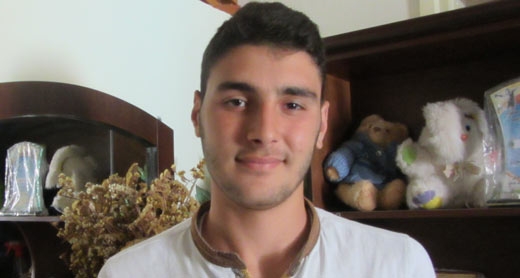


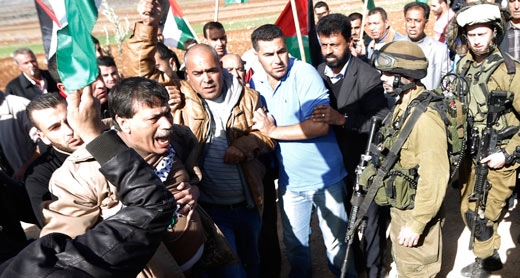


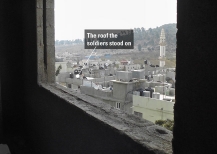
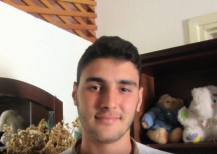
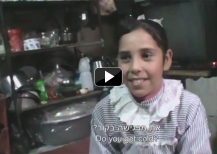
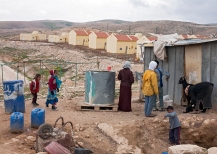
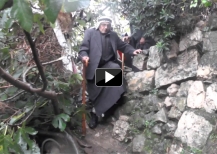



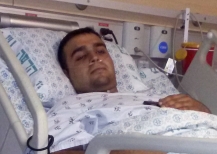

هیچ نظری موجود نیست:
ارسال یک نظر